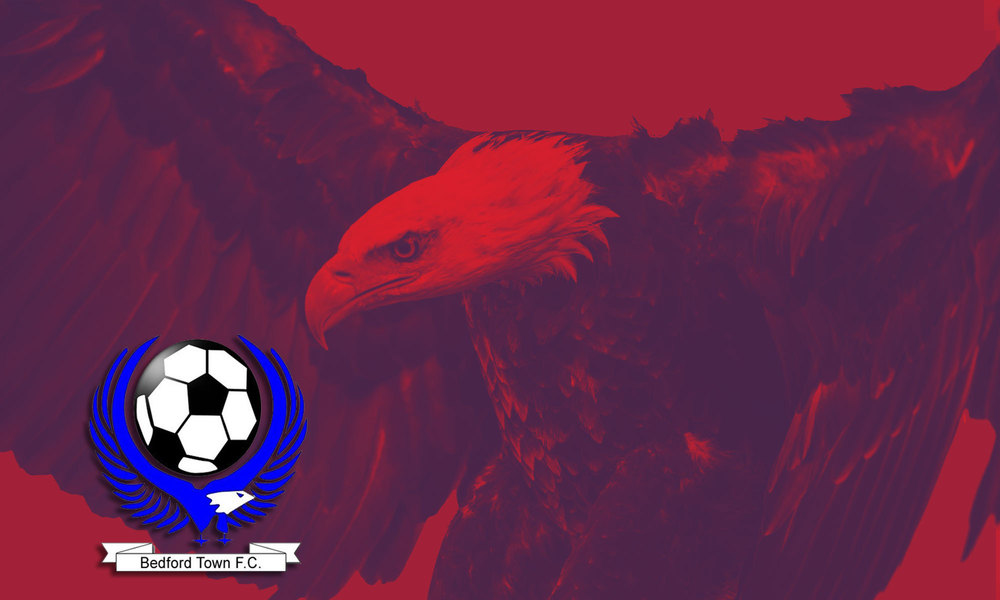
Although Bedford Town had a gap of ten years in the wilderness after disbanding in 1982, they have spent the majority of their playing days in the Southern League, apart from three seasons in the South Midlands League after re-forming, then ten seasons in the Isthmian League and one unsuccessful campaign in the Conference South in 2006/07 after winning the 2005/06 Southern League play-off final.
However, the Eagles have a rich history within their ups and downs and have had some excellent players wear their colours over the years, some of whom I have covered in other articles on here.
The likes of former international stars such as ex-player boss Ronnie Rooke, Spurs legend Cliff Jones, former manager Trevor Gould, record appearance holder David Skinn, Bobby Folds, Barry Fry and Billy Best have all been covered in various features during lockdown.
But there are plenty of other players well worth a mention having once been an Eagle.
Len Duquemin won a Southern League South Eastern zone championship winners medal in 1958/59 with Bedford and, although they went on to lose the overall title play-off with North Western zone winners Hereford United, they still earned promotion to the Premier Division.
But the signing of Duquemin that season, still caused a few newspaper headlines as he was still a big name in the game, despite being 34 by then.
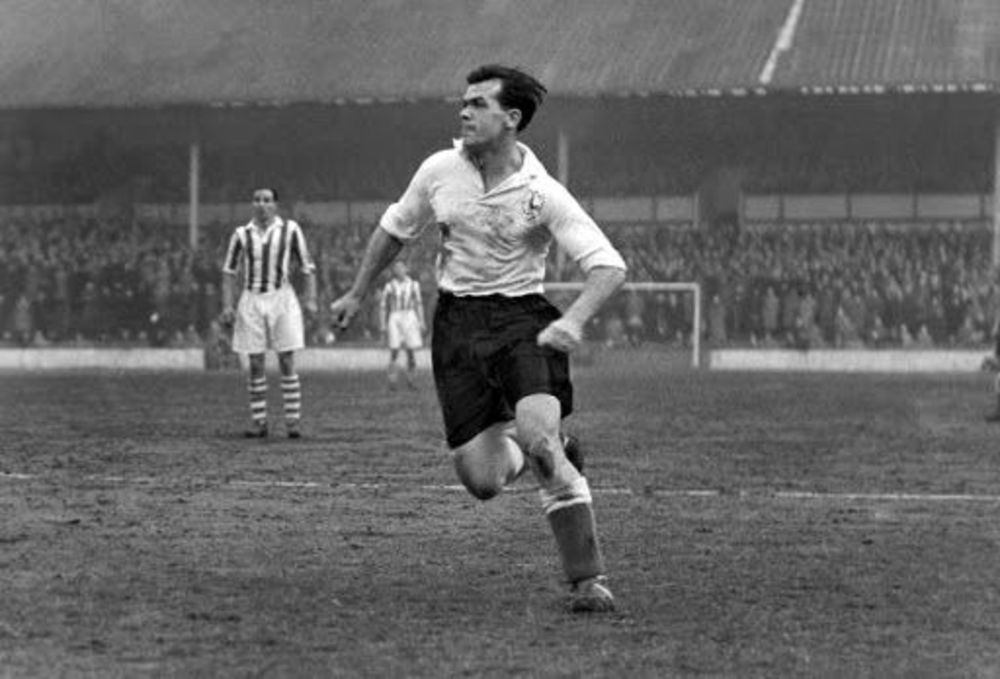
Duquemin (pictured) was born on Guernsey and worked as a gardener in a monastery during the occupation of the Channel Islands by the Germans during World War Two. He thus became fluent in French as the Monks did not speak English.
He was playing for the Vauxbelet club in 1945 when he was recommended to Tottenham Hotspur, who gave him a trial in December 1945 and signed him on amateur forms.
He turned professional in September 1946, having already made his first team debut in a wartime match in the Football League (South) in March 1946.
Spurs loaned him to Southern League Premier Division side Chelmsford City, then managed by future Spurs boss Arthur Rowe, as they did not have a reserve team at that stage.
His Football League debut was made in a Division Two match against Sheffield Wednesday in August 1947.
'The Duke' as he became known was a chunky, workmanlike player, who was not as skilful as others of the Rowe team. But he was a very hard worker and scored many crucial goals in the two seasons that saw Arthur Rowe's team win the Second and First Division.
In 1954 the writing looked to be on the wall when Spurs signed Dave Dunmore from York City.
But Duquemin fought back, also resisting a challenge from Alfie Stokes, and did not leave Tottenham until November 1958, by which time Bobby Smith had arrived from Chelsea.
Duquemin scored 144 goals in 275 appearances for the club and was part of Rowe's famous `push and run` side.
He signed for Bedford in November 1958 and scored a phenomenal 74 goals in 84 games for the Eagles, including netting six in a nine-goal hammering of Poole Town in 58/59.
After declining terms to stay at the Eyrie in the summer of 1960, Duquemin moved to league rivals Hastings United and then to another Southern Premier outfit, Romford, in 1961 before retiring to run a newsagents business and a public house before retiring.
He died in 2003 at the age of 78.
Although I have featured David Skinn on here previously, this piece on Bedford Town cannot pass without featuring his long-time defensive partnerNorman Cooley.
Cooley played for the Bedford 738 times between 1961 and 1977 and later became a groundsman for Bedford School where he spent most of his later life.
In 2017 he received the award as Groundsman of the Year for the Southern League at St George`s Park, despite being diagnosed with dementia three years earlier.
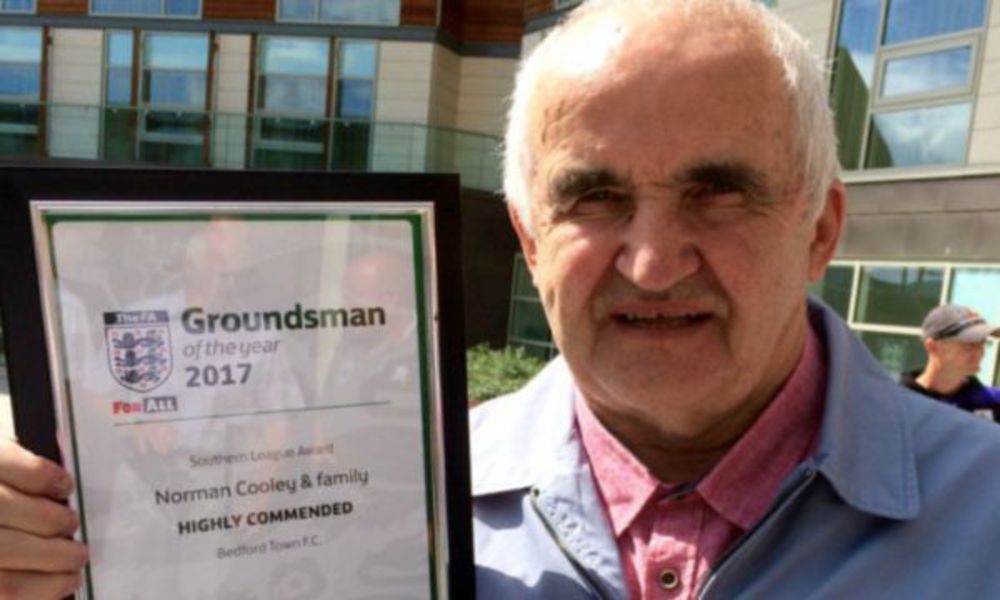
Cooley (pictured) actually started out with United Counties League side Bedford Avenue, for whom he made his first team debut in April 1959.
He moved to another UCL side, Eynesbury Rovers, in the summer of 1959 and had trials with Arsenal whilst with Rovers.
He first appeared as amateur for Bedford Town in the reserves early in 1960/61 and then signed `pro` for the Eagles in 63/64.
After making 738 appearances for the Eagles, he finally left at the end of the 1977/78 season and became the club`s youth coach while still playing for Kempston Rovers in the UCL.
Cooley was awarded a joint testimonial with David Skinn in 1970/71 and again in 1977/78.
He became player-coach at UCL Premier Division Wootton Blue Cross from the start of the 1979/80 season and later became player-manager in succession to Alan Wright.
He returned to Kempston as a player again December 1982 and then joined UCL Division One side Sharnbrook for a brief spell in February 1984.
It was to another UCL Premier Division side. Raunds Town, where he finished his playing days, re-joining his former boss Alan Wright again, in the summer of 1984.
He became groundsman for Bedford School and continued to play Minor Counties cricket for Bedford Town and Bedfordshire.
Kevin Blackwell is better known these days as being a regular sidekick for Neil Warnock wherever he manages – currently at Championship side Middlesbrough.
However, he also had his own managerial spells without Warnock at Leeds United, Luton Town, Sheffield United and Bury.
A very agile goalkeeper in his playing days, he started out on Cambridge United`s books as a youth before signing for Bedford in the summer of 1977.
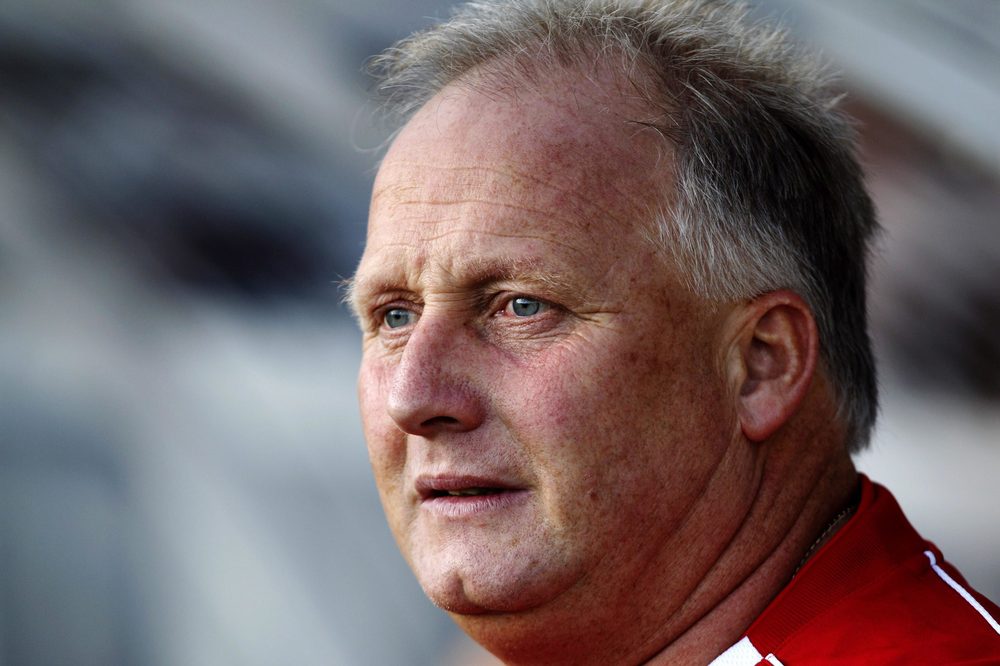
His spell with the Eagles was a short one, however, as he had moved on to South Midlands League side Barton Rovers before the end of the 77/78 season, which culminated in a trip to Wembley for the FA Vase Final where they lost 2-1 to Newcastle Blue Star.
A bricklayer by trade, he toured with the Middlesex Wanderers to Holland and Indonesia before signing for Barnet in 1979 and then moving to fellow Alliance Premier outfit Boston United for £5,000a year later.
He returned to Wembley to play in the 1985 FA Trophy Final against Wealdstone, where he saved a penalty.
After making 227 appearances for the Pilgrims, Blackwell (pictured) was signed by Warnock for Scarborough and he followed his manager to Notts County, Torquay United and Huddersfield Town.
He finished his playing days at Plymouth Argyle
Went on to play for Scarborough, Torquay United, Huddersfield Town and Plymouth Argyle and went on to coach at Huddersfield, Bury, Sheffield United, Crystal Palace, Barnet, Queens Park Rangers, Cardiff City and then Middlesbrough.
Gary Sargent hails from the Bedfordshire village of Turvey.
The striker`s playing career started after playing for Turvey and Bedfordshire under-14s, leading to a four-day trial at Leeds United.
Although unable to offer him anything at Elland Road, Leeds manager Don Revie recommended Sargent to Lol Morgan at Norwich City and he was invited to Carrow Road for a trial which proved successful.
Although he only made a handful of first team appearances, he helped Norwich to win the Second Division title in 1971/72 and hit the national headlines when he and his wife interrupted their wedding to fly down to Luton for him to play whilst his new bride cheered him on, still in her wedding dress before flying back to their wedding reception!
He was transferred to Scunthorpe United before signing for Bedford in the summer of 1973.
He went on to make 234 appearances for the Eagles, mostly in the Southern Premier Division, scoring 92 goals.
He was sold to Third Division Peterborough United in June 1977 for a £7,000 fee before going on to play for Northampton Town, Barnet, for whom he made 85 appearances mostly in the Alliance Premier League, scoring 7 goals, Wellingborough Town in the Southern League and then United Counties League outfit Irthlingborough Diamonds.
In 1986, he took over as player-manager of another UCL side, Northampton Spencer, and became the longest-serving UCL manager, eventually quitting the post in 2002.
Often partnering Gary Sargent in Bedford`s attack was David Parratt.
He first started playing seriously for Boreham Wood and representing England Schoolboys, Parratt was playing Sunday football when his club’s trainer recommended him to Bedford in 1971.
After impressing in the reserves, he was signed on senior forms by Barry Fry in December 1972.
But within a couple of years, the flamboyant Fry moved to fellow Southern League outfit Dunstable Town on the promise of being given plenty of funds for players and managed to persuade the likes of George Best and Jeff Astle to turn out at Creasey Park, and later that season he also persuaded Parratt to switch to Dunstable, initially on loan, in September 1976. He had made 129 appearances for the Eagles and scored 24 goals.
However, the money ran out, Dunstable folded, but Fry helped Parratt to join another Southern Premier side in Wealdstone in January 1977.
And that turned out to be a great move as Parratt quickly struck up a partnership with legendary goalscorer George Duck
The Stones were struggling in the league in the Spring of 1977 and boss Alan Fogarty switched Parratt`s role in the team and the Stones lost just once in 16 games to finish the season in 14th place.
It was a similar story in 1977/78 - 22 games unbeaten saw the club finish 8th, ensuring its place in the newly-formed Alliance Premier League.
However, Parratt was sold to Aylesbury United around Christmas 1978.
He played over 110 times for the Ducks in his new midfield role, netting 25 goals before moving to Isthmian League side St Albans City and back to playing up front.
He left the Saints following a difference of opinion with the manager at the time and he had short spells with Stevenage and then to Barnet in the Conference under Barry Fry for a short time.
He finished by managing Herts County League side Cuffley.
There can`t be many Southern League or many non-League clubs in general who could boast having a former Juventus star in their team. However, Bedford can, with Johnny Jordan having a season with them in the 1950s.
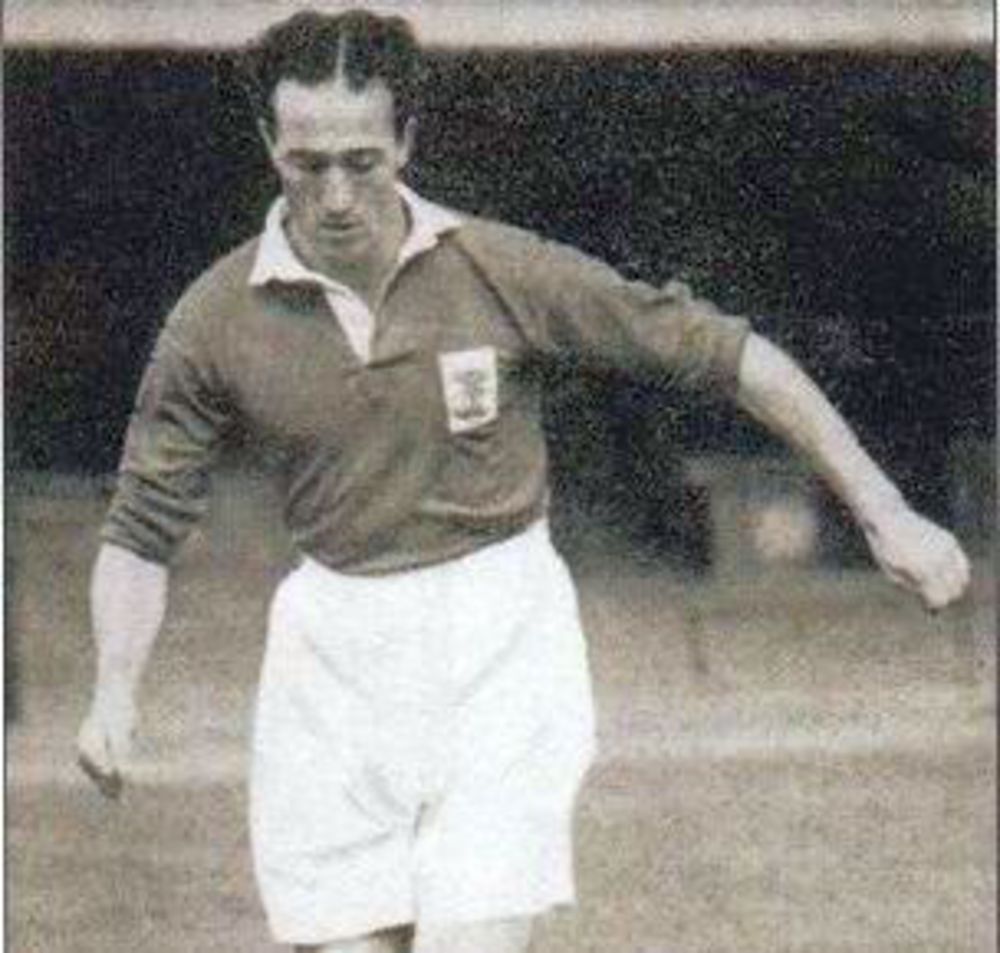
Born in Bromley, Jordan (pictured) established a fine reputation as an amateur with Athenian League side Bromley and Corinthian Leaguers Grays Athletic and was also on West Ham United’s books.
He looked set to play for England at amateur level when he underwent trials with Tottenham Hotspur and so impressed the White Hart Lane club that he was immediately offered a professional contract.
That was in August 1947, and he went straight into the first team, scoring twice on his debut against Sheffield Wednesday at White Hart Lane.
Skilled in possession and with a good passing range, he went on to score 10 goals in 24 Second Division games for Spurs that season and also played in three FA Cup ties as they reached the semi-finals.
However, that would be his only season at Tottenham because in August 1948, the club received an excellent offer of £8,000 from Italian giants Juventus for his signature.
Unfortunately, it did not go too well for Jordan in Italy and by March 1949, he was back in England as a Birmingham City player for a £10,000 fee after playing 20 times and scoring 5 goals in Serie A.
He then had a year with Sheffield Wednesday before joining Southern League side Tonbridge in October 1951 whilst being on Wednesday`s transfer list at £8,000.
In the summer of 1953, he joined Bedford and played 44 times and netted 15 goals.
He finished his career with Dover in the Southern League First Division.
Mick Collins joined Bedford in June 1963 and went on to become the club`s captain for two years.
Although born in Bermondsey, he gained his first experience in the game in junior football in Northamptonshire and played for Wellingborough Town in the United Counties League at the age of 17.
He then turned professional with Luton Town in March 1955 and was a member of their First Division squad.
In the summer of 1962, Collins signed for Southern Premier Division side Chelmsford City but spent only one season at New Writtle Street before joining the Eagles.
He went on to make 225 appearances for Bedford, netting just the one goal.
He refused terms offered by the Eagles in 1967 and left for league rivals Cambridge City.
Vernon Avis began his career in the youth team at Second Division club Brentford in 1952.
He made his senior debut at the age of 18 against Stoke City at Griffin Park in December 1953.
But due to National Service, Avis spent much of his subsequent Griffin Park career in the reserves, although he ended up with making 19 appearances.
He was handed a free transfer at the end of the 1960/61 season and signed for Bedford.
He went on to make 179 appearances for the Eagles, scoring 2 goals, mainly playing at left back, although he did have several games as an emergency centre-forward.
He acted as caretaker manager in April 1967 before leaving the Eyrie to end his playing days with Rushden Town in the United Counties League.
Wing half Colin Brittan was, like Len Duquemin, a valued member of the great `push and run` team under Arthur Rowe at Tottenham Hotspur and joined Bedford with his centre-forward team-mate for a combined £2,000 fee in November 1958.
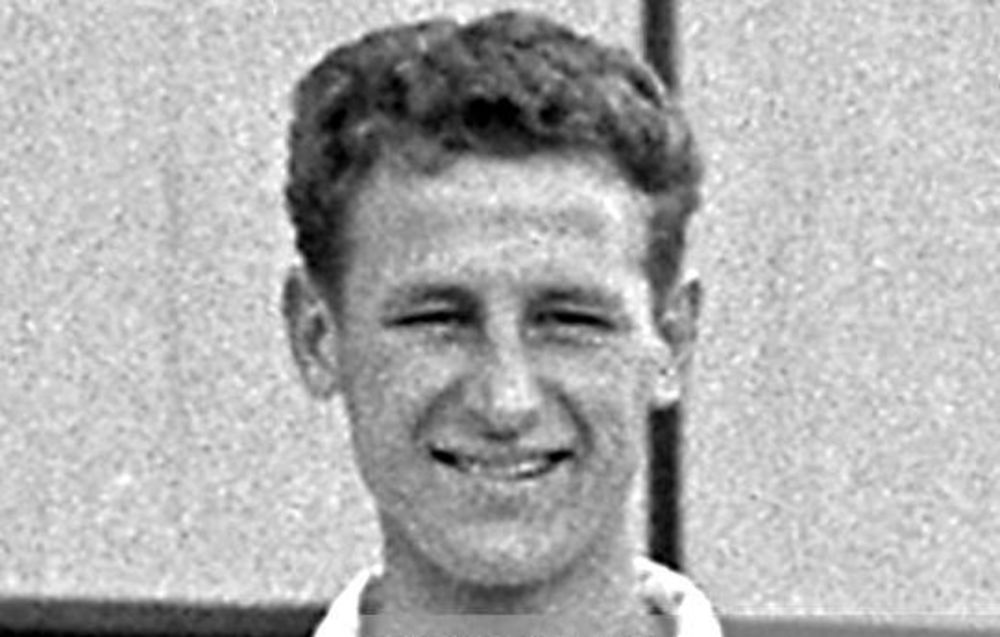
Brittan (pictured) was on the Spurs playing staff for ten years during the immediate post-war era.
A stalwart of the reserve team, he made over 300 appearances for the club but of those only 45 were at senior competitive level as he had to vie with the likes Ronnie Burgess, Bill Nicholson, Danny Blanchflower and Tony Marchi for a slot in the half back line.
Born at Bristol, he spent his National Service with the Royal Fleet Arm and was spotted by Spurs playing for the Bristol North Old Boys club he signed as an amateur on January 20, 1948.
He featured in the A` team’s first game in the Eastern Counties League against Clacton Town in August 1948 and stepped up for his reserve team debut away at Bristol City two months later.
He took up the offer of a full professional contract on October 27 that year and ended the following season with an East Anglian Cup winners’ medal.
He was ever-present in the five matches culminating in the 4-1 victory over Harwich & Parkeston in the final on May 6th, 1950.
It was against Burnley on October 7, 1950 that Brittan made the first of his 41 appearances in the Football League for Tottenham and his best season was 1952/53 when he made 13 senior appearances, including 4 in the FA Cup.
He won Football Combination championship medals in 1955/56 and 1956/57 and made the last of his 257 appearances for the intermediate teams at Chelmsford City in November 1958.
After joining Bedford, he made 24 appearances for them in their Southern League championship side that season.
He totalled just under 100 games for the Eagles with 2 goals before leaving for Southern League First Division side Tunbridge Wells United in 1960 where he was made captain.
On retiring from football, Brittan returned to the Bristol area and worked for the Fisons smelting company at Avonmouth.
He passed away in 2013 at the age of 85.
Ron Fogg became a well-known figure in Southern League circles during the 1960s as a forward and defender.
Born in Tilbury, he started out with his then-London League home-town club and trialled for the England Amateur side whilst with the Dockers.
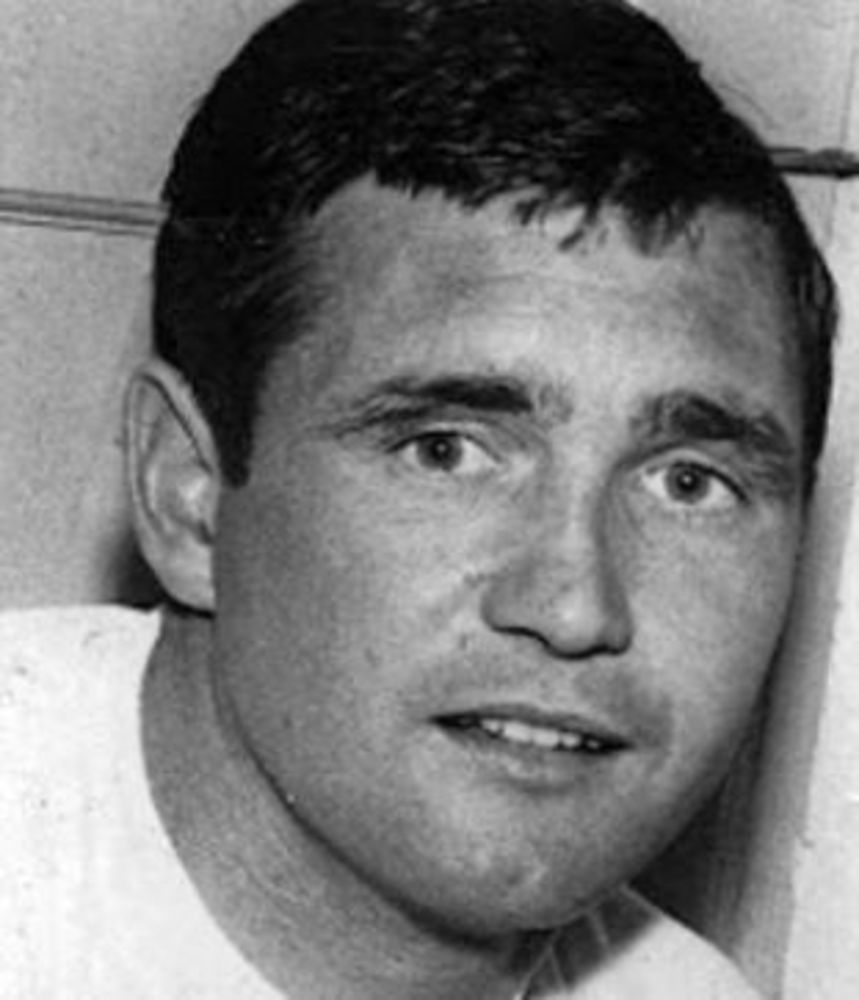
But he turned professional with Southend United in 1959, for whom he made 2 Football League appearances, before he moved into non-League football with Southern League Weymouth in 1961.
He made 159 appearances for the Terras, scoring exactly 100 goals before a £2,000 transfer back into the Football League with Aldershot.
He spent two seasons with Aldershot in 1963, scoring 28 goals in 64 appearances, before moving back into the Southern League with Hereford United in 1965.
He moved to Bedford in the summer of 1966 for an undisclosed fee.
And he spent four seasons at the Eyrie, scoring 37 goals in 147 appearances.
Fogg (pictured) moved to Southern Premier Division rivals Chelmsford City in September 1969, initially on trial, and made 78 appearances, scoring just 2 goals having been moved into defence soon after his arrival at New Writtle Street.
He was released by City in 1971 and later played for Brentwood, Stevenage, Woodford Town and Dartford.
He also had a spell at Chelmsford in 1972 as a full-time lottery agent and later became secretary of Brentwood.
George Cleary was a renowned goalscorer in Southern League circles in the 1960s and 70s.
Born in Clapham near Bedford, the diminutive striker started his career with Bedford, starting out as an amateur in the reserve side before turning `professional` in 1963/64.
He went on to become a regular in the Eagles side for several years, the club turning down several offers for his services during this time.
He made 364 appearances and scored 139 goals for Bedford before being sold to Southern Premier Division rivals Kettering Town for a £2,000 fee in March 1973 where Poppies boss Ron Atkinson wanted to pair him with Roy Clayton in attack.
Cleary`s work rate assisted Clayton and the team, and he helped Kettering to clinch the title that season, scoring 7 goals in 8 league games.
Barry Fry, who Cleary played with and under at Bedford, took him to Dunstable Town six months later at the time when they were signing `big` names like Jeff Astle.
But in December 1975, at the age of 28, Cleary got his first taste of League football when Atkinson surprisingly came back for him and took him to Fourth Division Cambridge United.
However, he made just 8 appearances for the U`s.
He had short spells with Wycombe Wanderers, AP Leamington, Hillingdon Borough and Wealdstone before Fry re-signed him for Barnet in the Alliance Premier League.
However, he returned to Bedford later in the 1979/80 season and added a further 50 games to his tally with 19 goals.
He finished his playing career with a spell at United Counties League side Wootton Blue Cross.
Eddie Lawley was a very talented defender who was on the books at Leicester City and Notts County as a trainee until February 1995 when he was released.
He trialled with several League clubs but nothing came of them and he subsequently signed for Southern League Midland Division side Buckingham Town.
In January 1996, Lawley followed manager Mick Foster to then-Isthmian League Division Two club Bedford.
He helped the Eagles – the reformed club who had returned to the fold as a South Midlands League side in 1991 – to promotion to the Isthmian First Division in 98/99 and then to the Premier Division in 2000/01.
After three seasons in the Isthmian Premier, a restructuring of the non-League Pyramid saw Bedford return to the Southern League in 2004/05 and, after losing in the play-off semi-finals to Chippenham Town at the end of their first season, they again finished fifth the next campaign and this time got their revenge on Chippenham, who had lost the previous final to Hednesford Town, by beating the Bluebirds by the odd goal in five at Hardenhuish Park.
Lawley now found himself playing four divisions higher than when he joined the club as they entered the Conference South for the first time in either club`s history.
However, it was a step too far for the Eagles and manager Nicky Platnauer, who had led them through the two play-off campaigns.
He quit in January 2007 with the team bottom of the table and struggling.
They finished at the foot of the table and were quickly back in the Southern Premier Division.
Lawley played on before announcing his retirement at the end of the 2010/11 season.
He had made a mammoth 746 appearances for the club but he was combining playing and running a property development business and wasn`t devoting enough time to his family, so decided to call it a day at the age of 36.
There have been a number of former international players wear the Eagles colours over the years, with the most famous of those being former Spurs and Wales star Cliff Jones, who I have featured before on this site.
Doug Farquhar is an unusual case as he became an international AFTER leaving Bedford and at the age of 38!
He was actually born in Scotland and started out with Scottish Junior side St Andrews United just before the outbreak of the Second World War.
During the war years, the wing half guested for Irish side Distillery and after VE Day, Farquhar was signed by Arsenal.
However, in five years at Highbury, he failed to make a first team appearances in the powerful Gunners side of the time but was a reserve team regular and won a Football Combination winner`s medal in 46/47.
He moved to Reading in September 1950 and finally made his league bow in the Third Division South for the Royals, playing 9 games and scoring one goal.
He was released in 1952 and signed for Southern League side Hereford United.
But he was still living in Essex and travelling to Hereford for home games and in the end refused terms for 1954/55 and subsequently signed for Bedford.
He spent three years on the Eagles books, making 117 appearances and netting 3 goals.
In May 1957 though he decided to emigrate to the United States and played for the New York Hakoah side.
He won an American Soccer League championship medal and, amazingly, won a full international cap for the USA in 1959, although he played quite a number of `unofficial` internationals and was captain for many of them.
He later became a coach for Mount Kisco Soccer Club and died in New York in 2005 at the age of 83.
Mike Denton had a short spell with Bedford between March and September 1967.
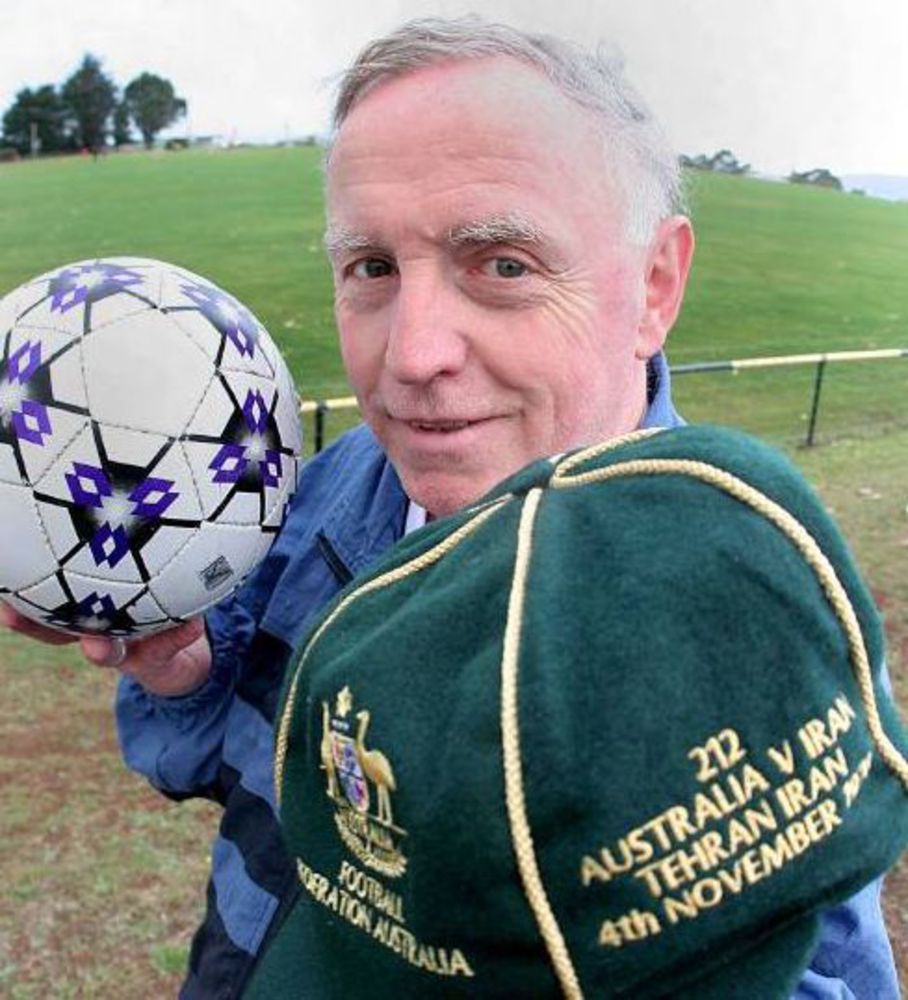
However, like Farquhar, he went on to become at international after leaving the Eyrie.
A centre-forward, Denton started his playing days with Newmarket Town in the Eastern Counties League.
In December 1963, Denton (pictured) was signed by First Division Ipswich Town and spent two seasons at Portman Road without managing to break into the senior side.
He moved to Southern League Premier Division Bath City in February 1965.
He enjoyed a fine spell with the Twerton Park outfit during a successful period the club.
He notched 75 goals in 114 games before joining Bedford in March 1967.
He was still on the Eagles books at the start of the 1967/68 season but was transfer listed and eventually moved to league rivals Cambridge City in September 1967 after making just 14 appearances for Bedford, scoring 4 goals.
Denton moved to Australia in October 1968, following a chance meeting with an Australian journalist, who organised a two-year contract with the St George-Budapest club.
St George-Budapest were just coming into their own as a powerful Australian club with multiple `Socceroos` in their team.
In 1970, Denton was shocked when he received a call to represent Australia, so rushed to gain his citizenship to participate.
He made his debut against Iran in November 1970 and went on to gain 14 caps and score 6 goals in a Socceroos jersey, but he lost his place in the team due to injury in 1974, so missed out in the 1974 World Cup squad.
Denton had by then joined Burnie Spartans in 1973 and played with them until they merged with the Burnie Rovers, becoming Burnie United in 1978.
Following his playing career with United, which he played in the first team until 40 years old and the reserves until 53, he went on to be a successful coach with junior sides and also coached in the USA for ten years before returning `down under to coach in Tasmania.
Bedford`s earliest former international to play for the club was Bob Hawkes.
He signed for the Eagles in 1920 when they were members of the Northants League and the winger scored 3 goals in 14 games for the club but by now was nearing 40 years of age.
He was born during Queen Victoria`s reign in 1880 and signed for Luton Town in 1900.
The Hatters had not been re-elected to the Football League after finishing second-from-bottom of Division Two and joined the Southern League.
The Southern League in those days was virtually on a par with the still relatively new Football League and Hawkes won the first of his 5 full international caps for England in 1907 against Ireland.
He also represented Great Britain in the 1908 London Summer Olympic Games and won a gold medal.
Hawkes also made 22 appearances in England amateur internationals before he turned `professional` in 1911.
He had many offers to leave the Southern League and go into the Football League but remained loyal to Luton until his retirement as a 39-year-old in 1920, when they re-joined the Football League themselves – ironically after finishing second-from-bottom of the Southern League!
He joined Bedford having made over 350 appearances for Luton, scoring 40 goals.
He died in September 1945 at the age of 64.
Billy McCullough enjoyed an interesting and colourful career.
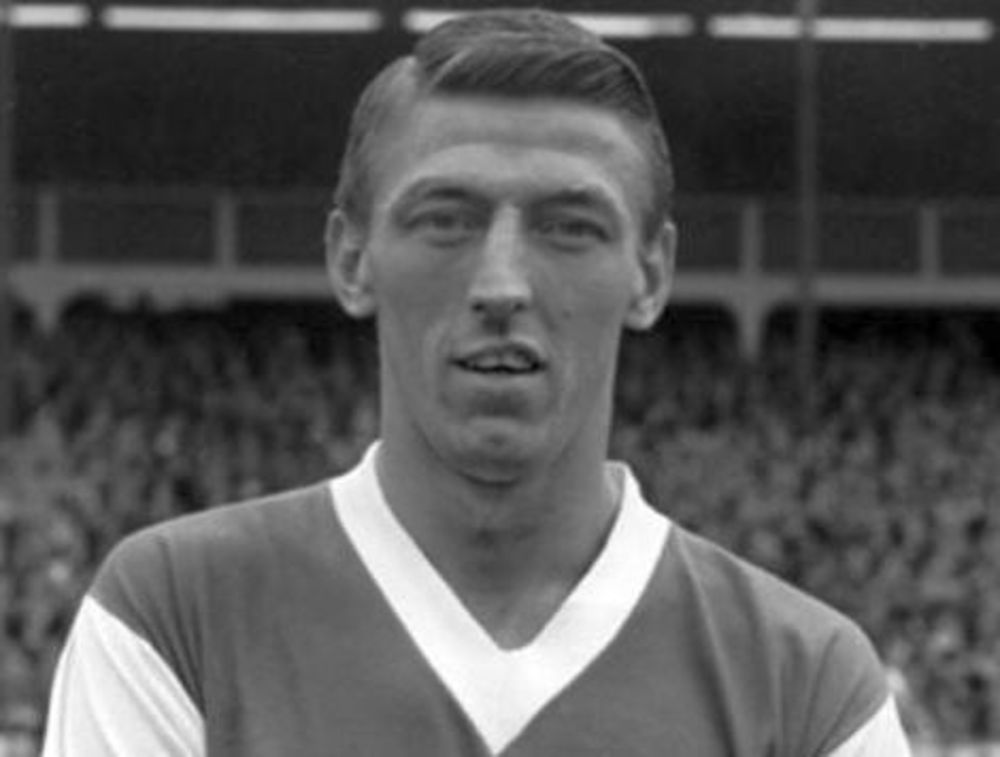
The Irishman started out with local sides Carrickfergus, Barn United and Ballyclare Comrades before being signed by Portadown at the age of 22 in December 1957.
But he didn't have long to wait to take the next steps as the aggressive, tough-tackling full-back was selected to represent the Irish League against the Scottish League in September 1958 and suitably impressed, despite the 5-0 reverse.
In September 1958 McCullough (pictured) joined Arsenal in a £5,000 deal and in December 1958 he made his First Division debut against Luton Town at Highbury.
The reverse fixture had been played the previous day and resulted in a 6-3 defeat for the Gunners. McCullough was called into the team for the demoralised Dennis Evans and, in a 1-0 victory, put in a sterling performance to eclipse fellow-countryman, Billy Bingham.
After a steady first season in which he played 11 first-team matches, McCullough established himself in the Arsenal number 3 shirt.
An early example of an over-lapping full-back, his regular forays up-field often left him looking stranded far from his defensive duties only for his pace to allow him to track back to make a vital challenge.
His more attacking traits were more-regularly utilised by Northern Ireland as he played all-but-one of his ten internationals at left-half with his preferred role filled by Burnley`s Alec Elder.
Through the early-to-mid-60s he played in a run of 163 out of 168 league matches while many other positions in the side were in constant flux.
Having lost his place in the Arsenal first-team to Peter Storey during the 1965/66 season, McCullough left the Gunners after 253 games and joined Second Division Millwall in August 1966.
His stay with the Lions was brief, making just 19 appearances in 66/67 and in the summer of 1967, he signed for Southern League Bedford, who had been relegated to Division One the previous season.
But under manager Ron Heckman, the Eagles signed some useful players at the same time as McCullough.
The 32-year-old played a key role for Bedford, despite being sent-off in both league games against neighbours Kettering Town.
He made 50 appearances in 67/68 as the club made a rapid return to the Premier Division.
He played until October of the 68/69 season before deciding to take up a management opportunity back in Ireland with Cork Celtic then Derry City as player-manager.
Winger Terry Murray was something of a star turn in Irish football at the beginning of his career with Dundalk in 1950.
His form which had already earned him League of Ireland caps, saw him win his one and only full international appearances in May 1950 against Belgium at Brussels, which resulted in a 5-1 loss and was also the first time the Irish team had played under floodlights!
His excellent form at the beginning of the 1951/52 season drew a bid from Second Division Hull City, who had former England star Raich Carter as player-manager in his last English League season), and in October 1951 he joined the Tigers, making his debut in April 1952 against Everton.
Hull converted him to an inside forward and he made 32 League appearances, scoring 6 goals during his three-season stay with the Tigers.
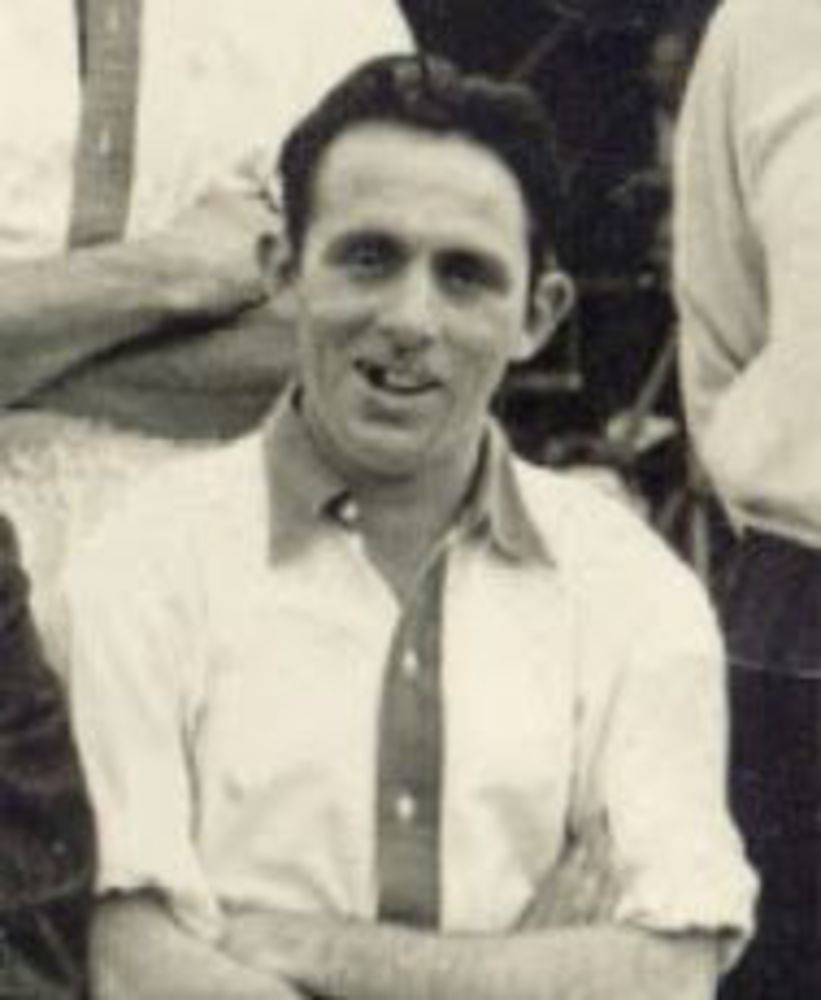
Murray`s (pictured) form earned him a place on an FAI team that defeated Glasgow Celtic 3-2 at Dalymount Park in April 1953.
Competition for forward positions was very hot at Hull and in March 1954, for a fee of £3,000, he joined Bournemouth where his appearances were intermittent (13 League games, 1 goal) and he was released at the end of 1954/55, joining then-Midland League side King`s Lynn in August 1955.
He spent a season with the Linnets, scoring 12 goals, before stepping up into the Southern League with Bedford in the summer of 1956 under charismatic Irish manager Tim Kelly.
As well as several FA Cup giantkillings, Bedford claiming two runner-up finishes in 1956/57 and 1957/58 and the following year, after an expansion of the league, he led Bedford to first spot in the Eastern Division and went on to defeat the Western Division champs Hereford United in the play-off.
In all, Murray spent five seasons with Bedford, starting out as a forward he gradually drifted back to a defensive role, finishing at left half back and in his last season he frequently took the captain’s armband and made a total of 230 appearances, scoring 37 goals.
After the break-up of the Bedford championship winning squad, Murray left to follow Tim Kelly to another Southern League side, Hastings United, before taking on the role of player-manager with Rushden Town in the United Counties League.
At this stage he was working with Britannic Insurance Company and, becoming increasingly effected by injuries (he had broken his ankle on three occasions), he retired from playing at the end of the 1963/64 campaign, after leading Rushden to the UCL championship.
He continued to be involved with football, spending six years as coach with Rushden until the demands of his job, following several promotions, took precedence over football.

Most clubs are looking for volunteers. Find out more on the button below:
www.PitchingInVolunteers.co.ukAll the news and results in one place.
REGISTER